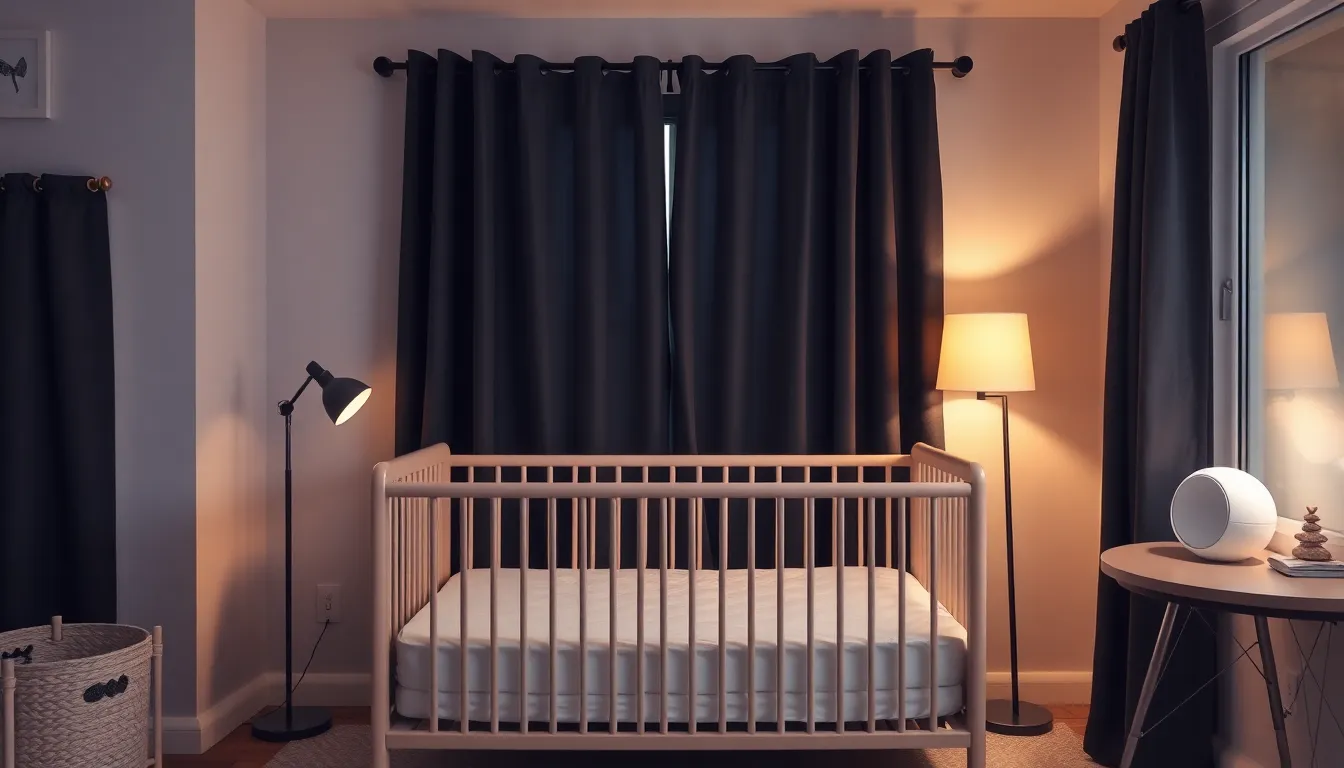Sleep is essential for an infant’s growth and development, yet many parents struggle to establish a restful sleep routine. Understanding the importance of quality sleep can make a significant difference in both the baby’s well-being and the family’s overall harmony. Infants need a safe and soothing sleep environment to thrive, and parents often seek effective strategies to help their little ones achieve deeper, more restorative sleep.
From creating a consistent bedtime routine to recognizing sleep cues, there are several ways to promote restful sleep for infants. By exploring these techniques, caregivers can foster a peaceful atmosphere that encourages healthy sleep patterns. This article delves into the key elements essential for nurturing an infant’s sleep, ensuring that both baby and parents can enjoy the benefits of a good night’s rest.
Table of Contents
ToggleUnderstanding Infant Restful Sleep
Infant restful sleep is essential for growth and development. Parents play a crucial role in facilitating this critical aspect of their child’s health.
Importance of Sleep for Infants
Infants require significant sleep—approximately 14 to 17 hours daily for optimal development. Sleep supports physical growth, brain development, and emotional regulation. During deep sleep stages, the body releases growth hormones and consolidates memory, reinforcing learning experiences. Insufficient sleep can lead to irritability, difficulty concentrating, and weakened immune function in infants. Establishing healthy sleep habits boosts both the infant’s well-being and the parents’ overall quality of life.
Developmental Milestones and Sleep Patterns
Infants undergo rapid developmental changes that influence sleep patterns. Newborns typically sleep in short cycles, around 50 to 60 minutes, transitioning to longer sleep durations as they mature. By three months, many infants begin to develop more regular sleep-wake cycles, demonstrating a shift towards longer nighttime sleep and fewer daytime naps. By six months, most infants can sleep for longer stretches, often between six to eight hours at a time. Recognizing these patterns helps parents adjust routines and expectations, ultimately promoting more restful sleep for the infant.
Factors Influencing Infant Restful Sleep

Several factors significantly impact an infant’s ability to achieve restful sleep. Understanding these elements helps create an ideal sleep environment and enhances parental involvement in sleep routines.
Sleep Environment
A conducive sleep environment greatly affects infant sleep quality. Key features include:
- Room Temperature: Maintaining a comfortable temperature between 68°F and 72°F promotes a cozy atmosphere. Overheating can disrupt sleep.
- Lighting: Soft, dim lighting fosters relaxation. Blackout curtains can help block external light sources, ensuring darkness during sleep hours.
- Noise Levels: Minimizing disruptive sounds creates a peaceful sleep space. White noise machines can provide soothing background noise to mask sudden disturbances.
- Bedding Safety: Using a firm mattress and fitted sheets in a crib lowers the risk of suffocation. Avoidance of loose bedding and soft toys enhances safety.
Parental Involvement
Parental involvement plays a crucial role in establishing healthy sleep practices. Important aspects include:
- Consistent Routine: Implementing a fixed sleep schedule emphasizes the importance of a consistent bedtime and wake-up time. Routine helps infants understand when to expect sleep.
- Sleep Cues: Recognizing and responding to sleep cues—such as yawning or fussiness—enables parents to put infants to bed at the right moment, preventing overtiredness.
- Soothing Techniques: Employing soothing methods, including gentle rocking or lullabies, can calm an infant before sleep. This practice reinforces the comfort associated with sleep.
- Positive Interactions: Engaging in affectionate interactions during sleep preparation creates a bond and establishes a sense of security. This emotional connection can positively influence sleep patterns.
Tips for Promoting Infant Restful Sleep
Promoting restful sleep for infants involves practical strategies that cater to their developmental needs. Implementing these techniques fosters a soothing environment conducive to sleep.
Establishing a Sleep Routine
Establishing a sleep routine is vital for encouraging consistent sleep patterns. Aim for the same bedtime each night to signal to the infant that it’s time to wind down. Include calming activities like bathing, reading, or gentle rocking within the routine. These activities prepare the infant for sleep and help them associate specific cues with bedtime. Flexibility is essential; adjusting the routine as the infant grows ensures it remains effective as their sleep needs evolve.
Creating a Comfortable Sleep Space
Creating a comfortable sleep space significantly enhances an infant’s ability to sleep soundly. Maintain a room temperature between 68°F and 72°F for optimal comfort. Use blackout curtains to minimize light exposure and establish a dark atmosphere. Choose soft, breathable bedding that meets safety standards to reduce any risk. Keep noise levels low, utilizing white noise machines or soft music if necessary to mask disturbing sounds. An inviting sleep environment reassures the infant, promoting prolonged and restful sleep.
Common Sleep Challenges
Infants often encounter various sleep challenges that can disrupt their ability to achieve restful sleep. Understanding these challenges helps parents navigate solutions effectively.
Night Wakings
Night wakings occur frequently during the early months of an infant’s life. Infants may wake every few hours due to hunger, discomfort, or the need for reassurance. As they mature, these awakenings typically decrease, with many infants beginning to sleep for longer stretches around three to six months. Establishing consistent nighttime routines, such as calming activities before bed, can support a smoother transition to extended sleep periods. Parents should also consider if their infants are overtired or overstimulated, as both factors can increase the likelihood of nighttime disturbances.
Sleep Regression
Sleep regression refers to temporary disruptions in an infant’s sleep pattern, often occurring around specific developmental milestones. Common ages for sleep regression include four months, eight to ten months, and twelve months. During these phases, infants may experience increased night wakings or difficulty falling asleep. Sleep regression can stem from cognitive developments, such as learning to crawl or walk, which may lead to heightened awareness and restlessness. Consistent sleep routines and comforting techniques, such as gentle rocking or cuddling, can help infants navigate these periods, encouraging a return to more stable sleep patterns. Understanding that these regressions are normal can alleviate stress for parents while addressing the accompanying challenges.
Establishing restful sleep for infants is essential for their overall development and well-being. By creating a safe and soothing sleep environment and implementing consistent bedtime routines, parents can significantly enhance their child’s sleep quality. Understanding the unique sleep patterns and challenges infants face allows parents to adapt their strategies effectively.
With patience and dedication, parents can foster healthy sleep habits that not only benefit their infants but also contribute to a more peaceful home. Prioritizing restful sleep lays the foundation for physical growth, cognitive development, and emotional stability, ensuring that both infants and parents can thrive during this crucial stage of life.








